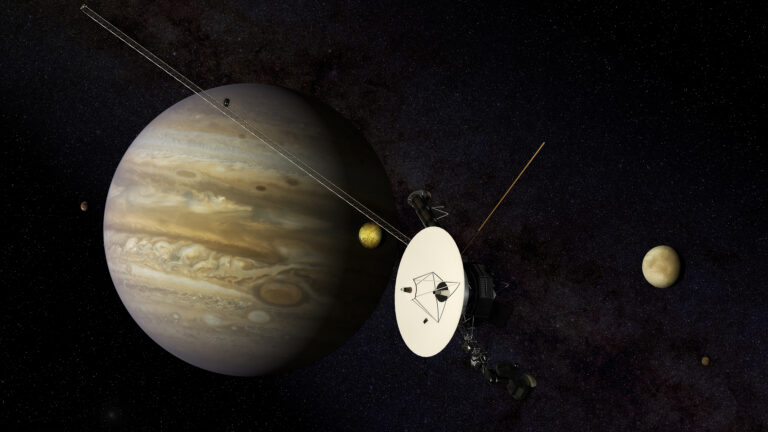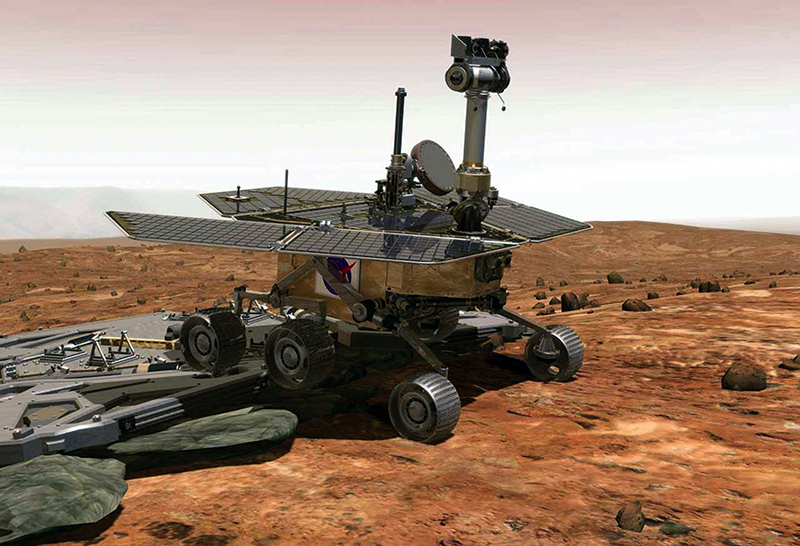Key Takeaways:
Venus Express was launched on a Soyuz-Fregat from the Russian Baikonur Cosmodrome in Kazakhstan on November 9, 2005, and arrived at Venus on April 11, 2006.
It has been orbiting Venus in an elliptical 24-hour loop that takes it from a distant 41,000 miles (66,000 kilometers) over the south pole — affording incredible global views — to an altitude of around 155 miles (250km) above the surface at the north pole, close to the top of the planet’s atmosphere.
With a suite of seven instruments, the spacecraft has provided a comprehensive study of the ionosphere, atmosphere, and surface of Venus.
“Venus Express has taught us just how variable the planet is on all timescales and, furthermore, has given us clues as to how it might have changed since its formation 4.6 billion years ago,” said Håkan Svedhem from ESA.
“This information is helping us decipher how Earth and Venus came to lead such dramatically different lives, but we’ve also noticed that there are some fundamental similarities.”
Separated at birth?
Venus has a surface temperature of over 840° Fahrenheit (450°Celsius), far hotter than a normal kitchen oven, and an extremely dense choking mixture of noxious gases for an atmosphere. But from the mission’s infrared survey of the chemical composition of the rocky surface, scientists have learned that Venus might have once had a plate tectonics system like Earth and even an ocean of water.
Just like Earth, Venus is losing parts of its upper atmosphere to space, and Venus Express measured twice as many hydrogen atoms escaping out of the atmosphere than oxygen. Because water is made of two hydrogen atoms and one oxygen atom, the observed escape indicates that water is being broken up in the atmosphere.
Today, the total amount of water on Earth is 100,000 times that on Venus. But because the two planets are about the same size and formed at the same time, both may have had similar amounts of the precious liquid in their early years.
Meanwhile, the spacecraft’s cameras have tracked thousands of features in the cloud tops some 40 miles (70km) above the planet’s surface, including an enormous swirling vortex at the planet’s south pole that shares similarities with hurricanes on Earth. The spacecraft also recorded bursts of lightning — identified by their electromagnetic signature — generated in clouds of sulphuric acid.
Studies of the planet’s “super-rotating” atmosphere — it whips around the planet in just 4 Earth days, much faster than the 243 days the planet takes to complete one rotation about its axis — also turned up some intriguing surprises. In one study, average wind speeds were found to have increased from roughly 190 mph (300 km/h) to 250 mph (400 km/h) over a period of six Earth years.
Conversely, a separate study found that the rotation of the planet had slowed by 6.5 minutes since NASA’s Magellan measured it, which completed its five-year mission at Venus 20 years ago.
However, it remains unknown if there is a relationship between the increasing wind speeds and the slowing rotation.
Magellan’s radar survey of the planet revealed that its surface was heavily altered in the past by a large number of volcanoes. But Venus Express has provided tantalizing hints that the planet may well be still geologically active today. One study found numerous lava flows that must have been created no more than 2.5 million years ago, just yesterday on geological timescales, and perhaps much more recently.
Indeed, measurements of sulphur dioxide in the upper atmosphere have shown large variations over the course of the mission. Although peculiarities in the atmospheric circulation may produce a similar result, it is the most convincing argument to date of present-day active volcanism.
Final swansong
Now, after eight years in orbit, the fuel supplies necessary to maintain the elliptical orbit are running low and will soon be exhausted. Thus, routine science operations concluded this week, and the spacecraft is being prepared for one final mission: to make a controlled plunge deeper into the atmosphere than ever before attempted.
“We have performed previous short ‘aerodrag’ campaigns where we’ve skimmed the thin upper layers of the atmosphere at about 165km [100 miles], but we want to go deeper, perhaps as deep as 130km [80 miles], maybe even lower,” said Patrick Martin of the Venus Express mission. “It is only by carrying out daring operations like these that we can gain new insights, not only about usually inaccessible regions of the planet’s atmosphere, but also how the spacecraft and its components respond to such a hostile environment.”
This “experimental aerobraking” phase is planned for June 18 to July 11, during which time some limited science measurements with the spacecraft’s magnetic field, solar wind, and atom analyzing instruments will be possible. Also, temperature and pressure sensors will record the conditions that the spacecraft is experiencing.
“The campaign also provides the opportunity to develop and practice the critical operations techniques required for aerobraking, an experience that will be precious for the preparation of future planetary missions that may require it operationally,” said Paolo Ferri, head of mission operations.
Aerobraking can be used as a way of getting into orbit around planets without having to carry quite so much fuel, thus reducing the launch mass.
It is possible that the remaining fuel in Venus Express will be exhausted during this phase or that the spacecraft does not survive these risky operations. But if the spacecraft is still healthy afterwards, its orbit will be raised again and limited operations will continue for several more months, fuel permitting.
However, by the end of the year, it is likely that Venus Express will have made its final descent into the atmosphere of the planet, bringing a fantastic scientific endeavor to an end.
“Venus Express has penetrated deeper into the mysteries of this veiled planet than anyone ever dreamed and will no doubt continue to surprise us down to the last minute,” said Håkan.










